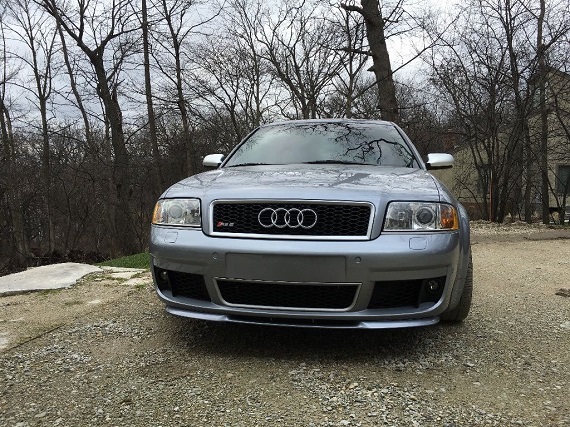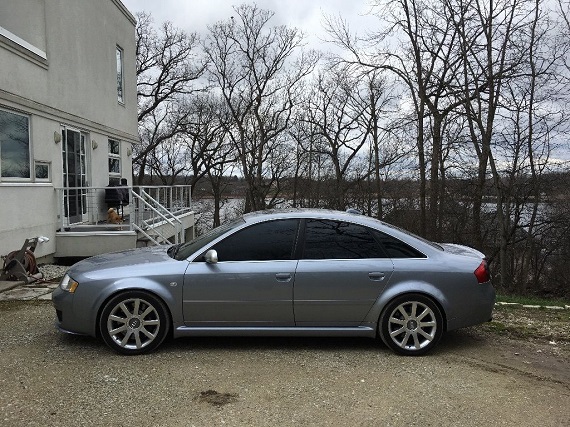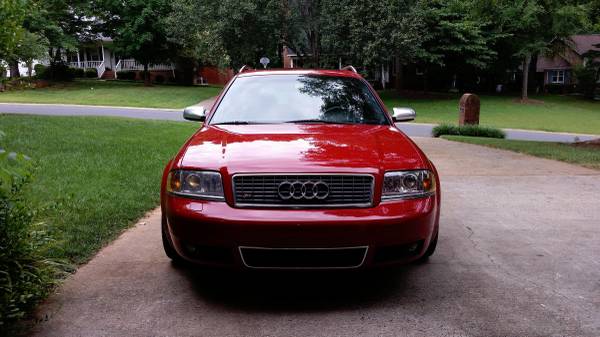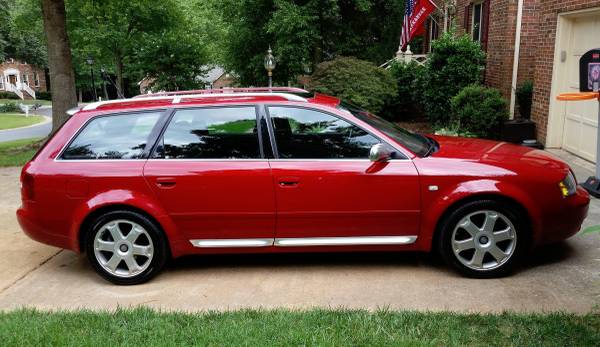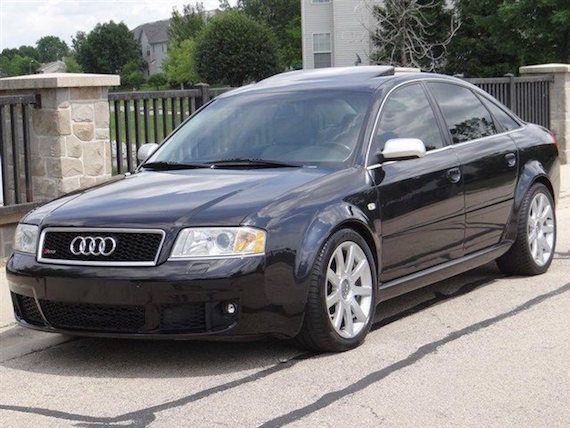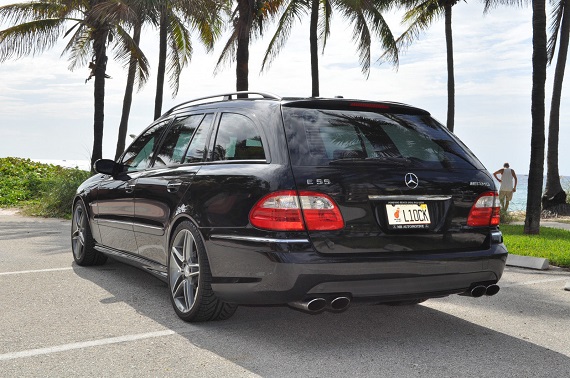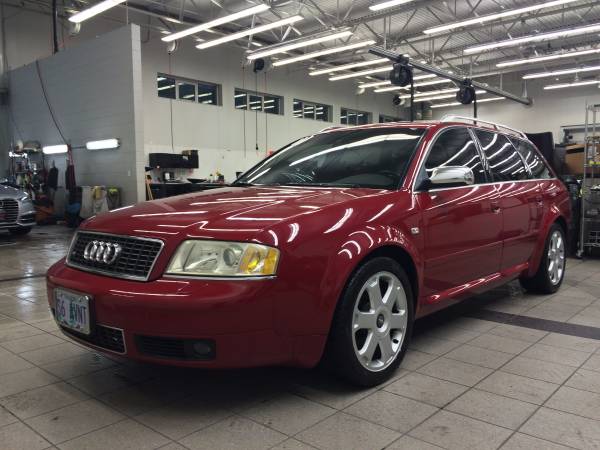After the legendary run of turbocharged inline-5 motors ended for U.S. customers in 1995, Audi would not deliver another S6 to these shores until 2002. When it arrived, it came in only one form – the popular Avant package. While many rejoiced that this was at the very least an option, it was still pretty expensive and not everyone loves the fast five doors (crazy though it may seem!). But Audi came very close to offering S performance in the special package which was the A6 4.2 quattro. There were many variants of the C5, and ostensibly the 6-speed manual 2.7T was the “sport” option for the chassis. But the top of the heap 4.2 40V offered you the ART/AWN V8’s torque and 300 horsepower with instant throttle response starting in 2000. Underneath the 4.2 carried a special aluminum subframe. Additionally, the all-aluminum engine was joined by specially flared fenders and hood in aluminum, “door blades” that would later be seen on S models, plus optional 17″ x 8″ Speedline (later changed to forged and polished “Fat Fives”) wheels and upgraded brakes and pads. Suspension was lowered and stiffened with the 1BE sport springs and struts in the optional Sport Package; a 20mm drop was accompanied by 30% stiffer springs, 40% stiffer shocks and larger sway bars. The combination gave a menacing appearance to the C5 that wasn’t really present in the narrow-body 2.7T. Today, the argument over which is the better chassis still rages in multiple fora, and while tuners usually love the twin turbo manual option, many others prefer the velvet hammer 4.2 which really was a defacto S6 sedan Audi never brought here:
Tag: C5
Outside of some with virtually limitless resources, you can’t go back in time when it comes to cars. Many enthusiasts try, and a few really devoted individuals succeed, in recreating the youth of a car’s life. But to do so, especially on newer cars, is pretty hard. Outside of the material costs of paint, leather and in some cases wood replacement parts, there is the Achilles’ heel of our modern society in general – plastics. New cars have become so heavily reliant on plastics because they’re strong, easily formed to special shapes, and lightweight relative to other products. But, as with the rest of the car, they get old; wear items in the interior of the car are often the most recognizable signs of use and time, but under the hood there’s a plethora of plastic heating up and cooling down. Top that with modern motors with turbochargers and extreme heat load as well as the increasing amount of refinement (read: sound deadening) buyers demand, and the time bomb of slowly decomposing plastic in your super sedan means that reconstructing a heavily used example may ultimately be impossible, but is certainly at least improbable.
That means that if you want what was a top-flight super sedan from a generation ago, you’d be looking for the lightest use possible. And when considering an Audi RS6, few if any come to the market with less use in miles than this one:
CLICK FOR DETAILS: 2003 Audi RS6 on eBay
2 CommentsThe Audi C5 chassis was a unique time when the American market got virtually all of the options that were available in other parts of the world. There were many different engine configurations; starting with 2.8 liters and working its way to 3 liters was the naturally aspirated V6 in either sedan or wagon form. Stepping up a notch got you twin turbos on the V6, which could be had with either a manual or automatic gearbox, again in either sedan or wagon form (albeit only in Allroad configuration). The Allroad introduced a concept pioneered by Volvo and Subaru and was hugely successful if hugely complicated, with an adjustable air suspension meeting a host of other electronic gizmos. V8s were optional as well, in the widened and lightened near-S-specification A6 4.2 sedan, or as we see here the full fat S6 Avant. Turn it up a notch further and you could twin turbocharge the V8 and get your 450 horsepower jollies in a RS6, though we only received the 4-door. Granted, we did miss out on some great TDi configurations and the V8s came as automatic only, but simply the option to have the 340 horsepower wagon was a novelty at the time. I, like most die-hard Audi fans, was both mystified and disappointed by the C5 S6 Avant. With no manual option and the much hotter RS6 only coming in a sedan, it felt like even with the plethora of options available that the top-of-the-heap Avant wasn’t really all that could be offered. Expensive and overshadowed by options cheaper that were nearly as quick but more gimmicky (and basically looked the same), they didn’t sell particularly well – but most were coveted by those that bought them, and when they do arrive to market they’re usually a far cry from the tired look most C5 Avants have assumed:
CLICK FOR DETAILS: 2002 Audi S6 Avant on Charlotte Craigslist
Comments closedFor me, the great appeal of the early ’00s era super sedans has always been their relatively restrained styling. Unlike contemporary offerings from M, AMG and quattro GmbH, which are nakedly aggressive and loud, the cars from this period don’t look too different from the underlying models on which they were based. The RS6 is a good example. The C5 platform A6 underpinning the car typifies Audi styling of the time: good looking and functional but a bit staid. I’d be willing to admit that some of the Bauhaus-esque curves and lines give it a little edginess, especially when when viewed from the rear quarter panel, but you have to squint hard to see them. Indeed, Regular Car Review Guy has a bit about the styling of the A4 of the same era being “the future by way of the past,” and I think that the same could equally be said about the A6. This conservatism continues into the RS6, but the deeper front spoiler, flared fenders, 18″ wheels and double exhaust make for a far more muscular look and hint at the extraordinary power that lies beneath. While enthusiasts will know what it is, most other people will mistake it for an ordinary executive saloon. And that’s a good thing. There’s something seriously cool about a car that blends into the crowd, but is nonetheless capable of cracking nearly 200 MPH on the autobahn.


